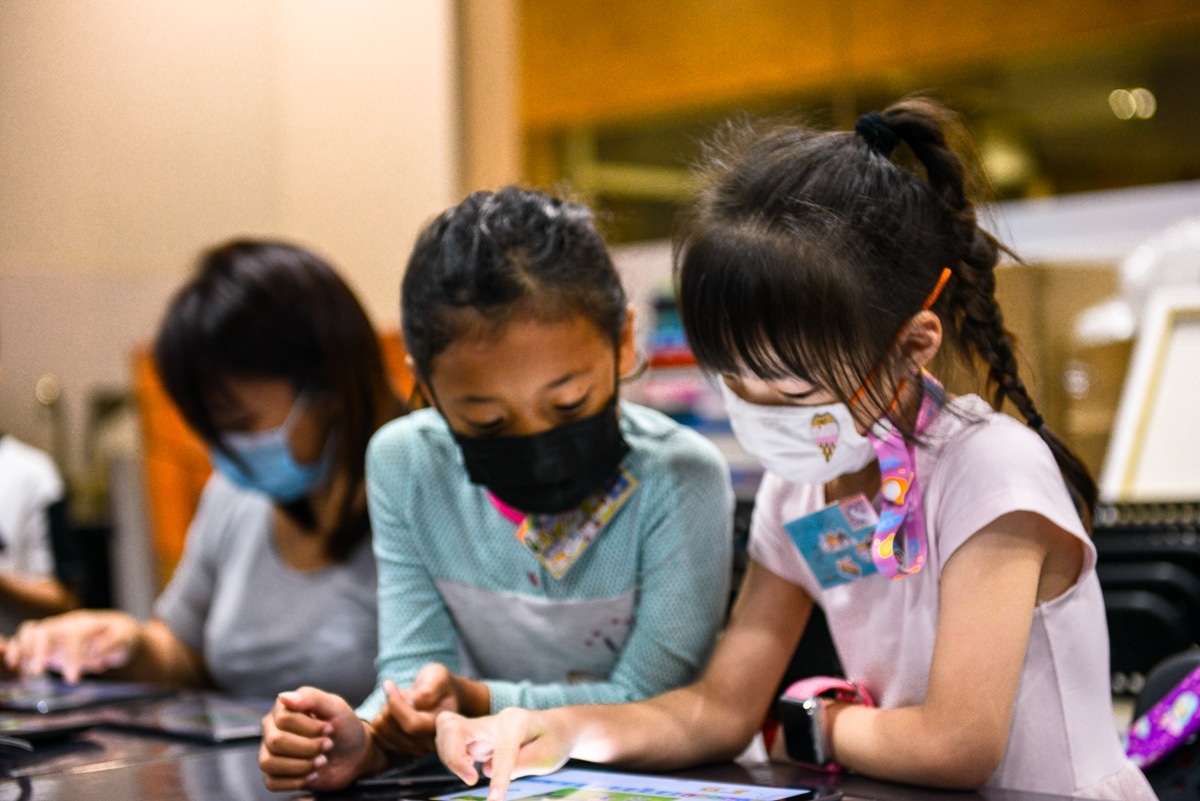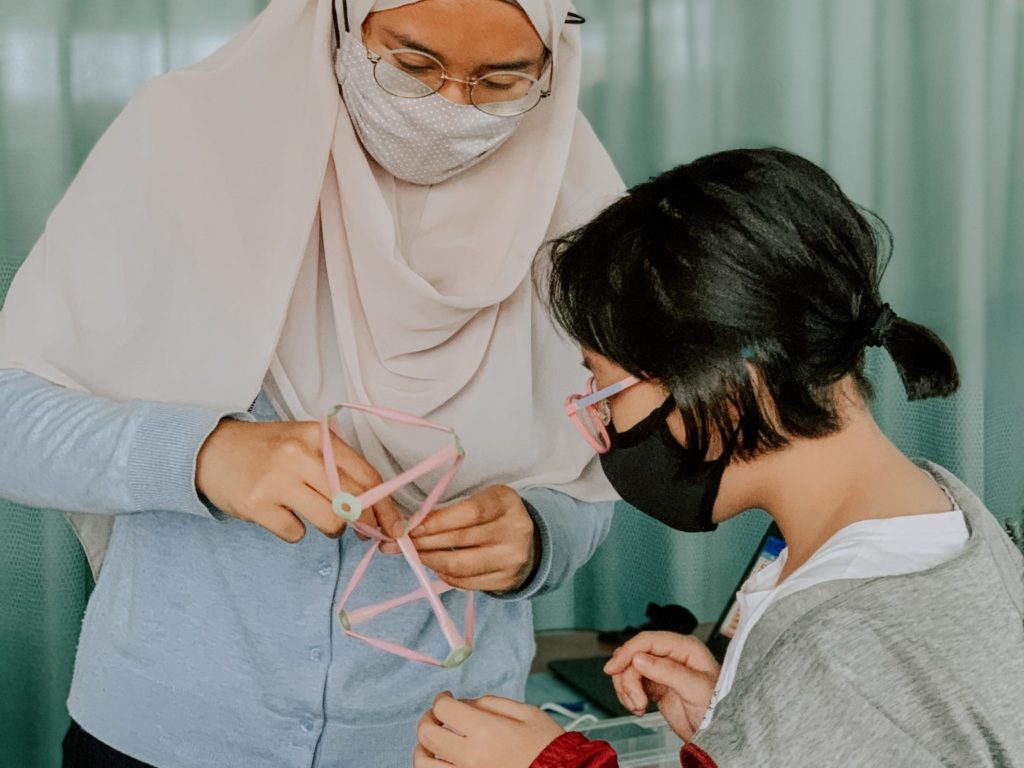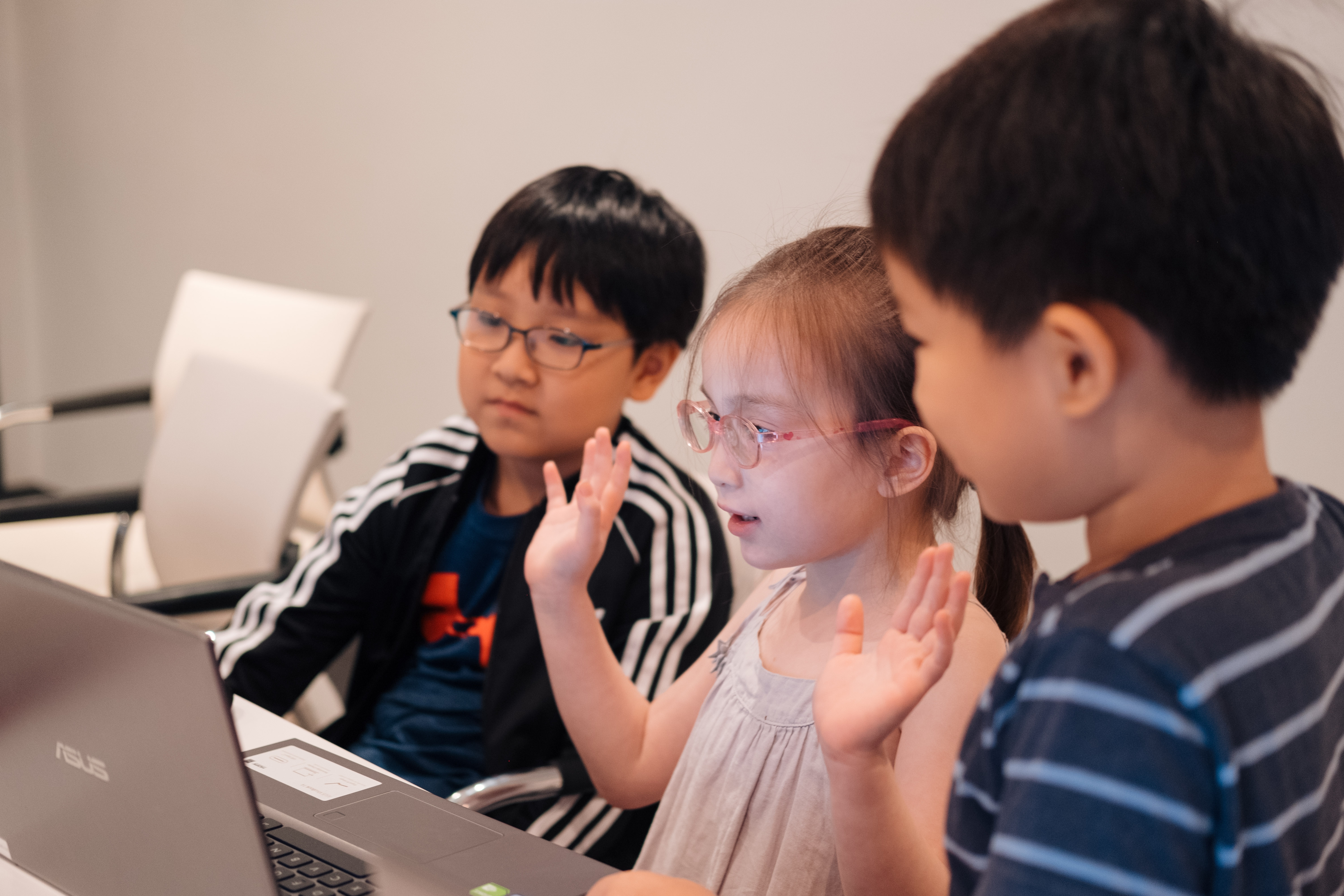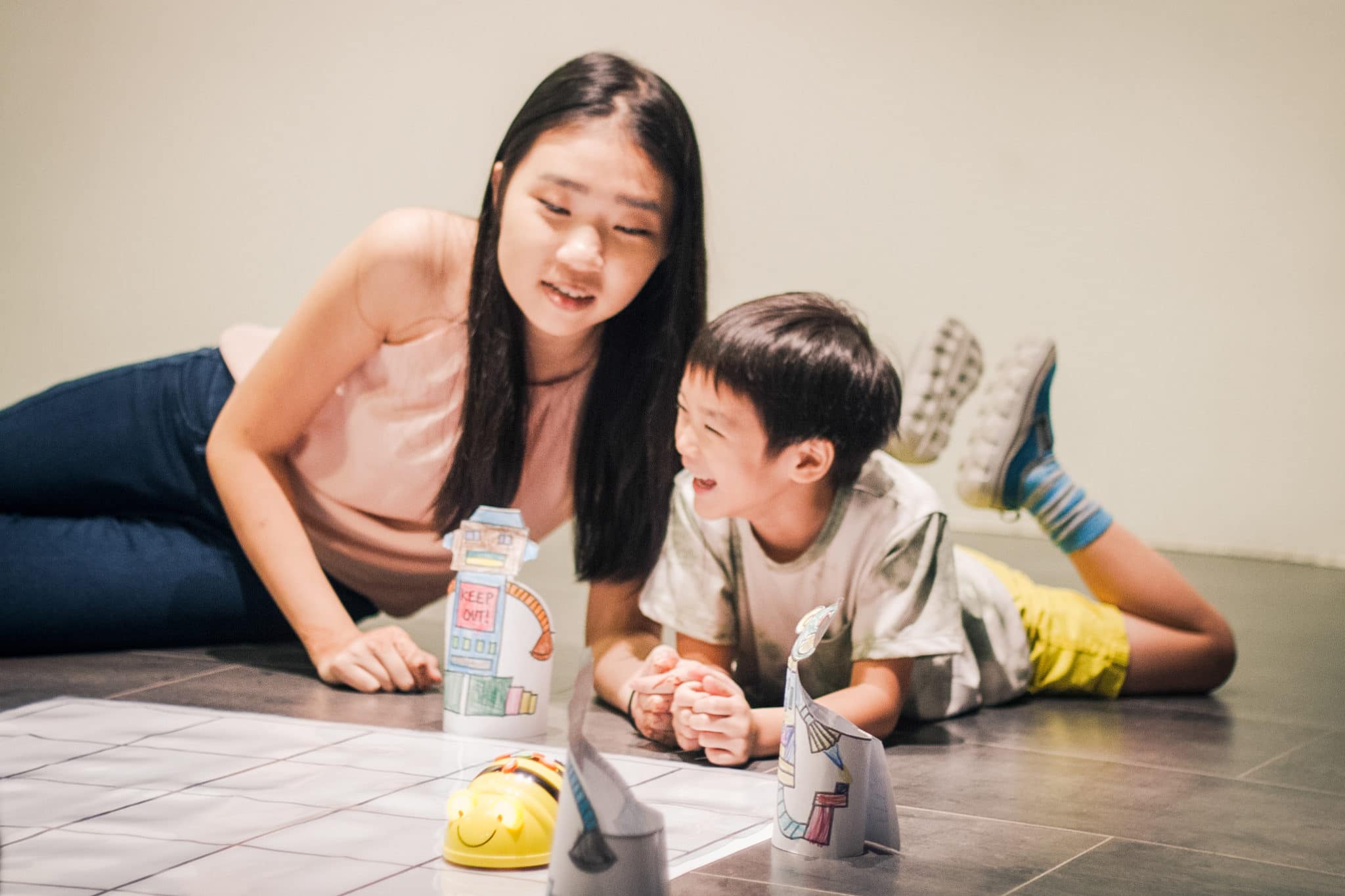The post Leave No Child Behind: The Gender Divide in Digital Skills and Why it Matters appeared first on Saturday Kids | Coding, Digital Literacy for Kids & Parents.
]]>“Women and girls are 25 per cent less likely than men to know how to leverage digital technology for basic purposes, 4 times less likely to know how to programme computers and 13 times less likely to file for a technology patent.”
– I’d Blush If I Could, strategies to close gender divides in digital skills through education via UNESCO
As an impact-driven coding school for kids, we’re emphatic about democratising digital literacy and diversifying representation in tech. In this series, we dive deep into different dimensions of access to digital literacy – why they matter, and what we can do about it.
In this post, we digest I’d Blush If I Could, a 146 page UNESCO report about the gender divide in digital skills. Here’s the 411 on the current state of the digital gap, why it matters, and the role of education in bridging it.
3 facts about the gender gap in digital skills:
- The greater the complexity of digital skills, the greater the gender divide
- Countries with lower levels of gender equality report relatively more women completing ICT programmes than more gender-equal countries
- It’s an educational issue. People have access to affordable devices and broadband, but do not have the necessary skills to tap on the potential of tech.
Why does this matter?
In a nutshell, the gender divide in digital skills inhibits gender equality and development at large.

Bridging this divide would result in:
- Facilitating women’s entry into the labour market
- Supporting the safety of women online and offline
- Enhancing women’s community and political engagement
- Progress towards UN Sustainable Development Goals, including SDG 4 (Quality Education) and SDG 5 (Gender Equality)
The causes of the gender divide in digital skills
Exclusion by demographic
Traditionally and historically, deep-seated patriarchal cultures, infrastructural barriers and financial obstacles have contributed to inhibiting women and girls’ digital literacy.
Females in communities that deprioritise the education of girls, or where the lack of tech infrastructure or poverty levels make access to digital learning prohibitive, are intrinsically excluded from realising the potential of technology.
Gender stereotypes and social pressures
The dominance of harmful gender stereotypes – such as the notion that tech is a male domain – is pervasive in multiple contexts and affects girls’ confidence from a young age. Studies reflect how confidence disproportionately affects females, resulting in the self-efficacy gender gap.
The funnel narrows in school, with spillover effects
The gender gap in digital competencies is non-existent at the primary school levels. But at the upper secondary levels, females express lowered confidence in their digital skills, captured in the growing self-efficacy gender gap. Because this coincides with the window of academic subject choices, females tend to opt out of tech education earlier than males.
By the tertiary level, there are disproportionately low female participation rates. The few females who remain face challenges like gender discrimination, competitiveness, and a lack of female peers which has been demonstrated to negatively impact their confidence.
Educational interventions can bridge the gap – here’s are 3 of our favourite evidence-based recommendations:
-
- Engaging experiences can make the experience of digital learning more accessible to and inclusive of students from traditionally under-represented backgrounds (and students in general). Collaboration, peer learning, and learning in a fun, relaxed environment increases engagement, particularly for girls.
- Emphasising meaningful application and tangible benefits – project-based learning centralises application, which both influences more girls to pursue ICT and facilitates the transition from education to employment. Focusing on issues that affect women and their communities may also be a way of demonstrating the benefits and utility of ICT. For instance, providing health information via mobile applications can motivate women to improve their digital skills.
- Gender-sensitive teachers – it’s key that educators unlearn attitudes and beliefs on gender-based abilities, which can negatively impact girls’ pursuit of tech-related studies particularly in primary and lower secondary grades. In particular, highlighting that skills are not fixed and can be improved – via instruction and feedback – will help girls to thrive.
At Saturday Kids, we strive for inclusive classrooms that inspire kids from all backgrounds, genders and demographics to create a brighter future with tech. And even as we educate ourselves and design learning experiences and environments to realise the potential of every child, we recognise that building inclusive classrooms is an ongoing process rather than a destination.
We know we can’t do this alone. As we embark on this journey, we’d love to partner and learn alongside allies and aligned organisations. We’d love to hear from you, and put our heads together to build a more inclusive tech industry, and a brighter future where no child is left behind.
Read the full paper from UNESCO here, or download this deck we’ve created – designed for a team ‘lunch and learn’ or teach-in. Learn more about Saturday Kids’ impact here.
The post Leave No Child Behind: The Gender Divide in Digital Skills and Why it Matters appeared first on Saturday Kids | Coding, Digital Literacy for Kids & Parents.
]]>The post Meet our #CodeintheCommunity Volunteers – Nurin Hasha: “I love teaching because I love learning” appeared first on Saturday Kids | Coding, Digital Literacy for Kids & Parents.
]]>Get to know some of ’em here – we hope their stories inspire you as much as they inspire us.
Hi Nurin! Could you introduce yourself?
“I’m a student who’s just finished my A levels – right now I’m interning at Girl Guides while waiting to go to university. In the future, I want to go into education, and right now I’m trying out different areas to gain more exposure to different fields.
I am quite curious, especially about the future – the world is moving at such a rapid pace, I like how interesting it is – you don’t know what’s coming next. When I was younger it made me feel uncertain, but I realised you have to embrace uncertainty and be the one to define the future.”
What was your experience in school like?
“My school experience was pretty different because of my experience in the Integrated Programme (IP) in secondary school; it was largely project based and emphasised self-directed learning – much like how the Scratch platform is designed.
In the Integrated Programme, I feel like I learned more because education didn’t feel so formal – I learned about myself and how to apply knowledge. I was free to choose what to learn – there was a lot of freedom, and it was great.”
What got you interested in education for kids?
“I was never interested in teaching ’til I started tutoring during the pandemic.
During the circuit breaker, I learned that a lot of students were struggling because they couldn’t cope with not physically going to school. There wasn’t enough guidance for them when everything went online. A number of volunteer groups – like Readable, The Learners’ Collaborative and Heartware Network supported these kids with the help of volunteer tutors. One group was even formed by former MOE teachers to reach out to these students who fell through the cracks.
Right now, I volunteer to tutor younger kids basic literacy.
Research has shown how important early intervention is. In Primary 1, for example, kids start to learn creative writing skills, but if they can’t already read, it’s difficult for them to process most kinds of content knowledge which sets them back in terms of learning in school.
I like it when there’s a sparkle in a kid’s eye – I’ve found that I love teaching because I love learning.”
What led you to Code in the Community?
“At a point during the pandemic, everything was going digital. Based on my volunteering experiences I’ve seen how difficult it can be for kids to learn at home – I’ve visited flats where there are 9 kids sharing a small space, and in those circumstances it’s really challenging to study at home.
I was wondering how kids like them would be able to make that digital transition, and wanted to figure out how I could help.
I found Code in the Community while searching for ‘coding’ and ‘kids’ on Google. I didn’t know how to code then, and found it pretty fun to start learning with Scratch.”
How has your experience been so far?
“This is the second time I’m volunteering and teaching Level 2 Scratch, which incorporates building with Strawbees and powering up their creations with the Quirkbot. I like that this course is so hands-on.


Honestly, the first few lessons were challenging! I had only taught online prior to this, so this was my first time teaching in person. I also had to figure out how to cater to the needs of the students of different ages, and asked my sister – who’s a teacher – for advice about differentiated learning.
I always bring a set of speakers to class and do this thing where I let the kids be the class DJ. Last week we had a robo race, and as the prize, the winner would get to be the class DJ next week! They really like electro-pop and musicians like Alan Walker, and also.. The Coconut Song…”
What do you hope for your CITC kids?
“I just really want them not to let rigid environments dampen their curiosity, questions and courage to explore.

This stems from my personal experience – I love the arts, and I love technology, and math, and philosophy. It is really cool how all these fields of study are interconnected with one another.
I think having a conducive and encouraging space to question, tinker, experiment, wonder and connect the dots is important. It is one of the best feelings to see how things fall into place when learning. I want my students to experience that and hope that the experience will drive them to want to learn more and be critical life-long learners.
When I was younger I had a lot of questions so I liked to explore them on my own – spending the night doing my own research on specific topics or going to the library to camp and indulge in non-fiction books. Sadly, I did not have someone to share my fascination with or to entertain my myriad of questions.
If the kids are as inquisitive as I was at that age, I just really want to be that person for them. In class, I try to spark more questions about why things are a certain way and how they work – about design and how it’s all about empathy.
I constantly try to push them to empathise more – to build with a purpose. Whatever knowledge they learn isn’t just for building their projects, but to be applied purposefully.
These kids are so young – My hope is that in Code in the Community they can just play and interact with other kids – to learn to collaborate and work together. Most importantly, I hope that they get a sense of joy out of learning and to be purposeful in whatever project in life they choose to embark on.”
The post Meet our #CodeintheCommunity Volunteers – Nurin Hasha: “I love teaching because I love learning” appeared first on Saturday Kids | Coding, Digital Literacy for Kids & Parents.
]]>The post Meet our #CodeintheCommunity Volunteers – Melody Yun: “I treat the computer like a 5-year old kid” appeared first on Saturday Kids | Coding, Digital Literacy for Kids & Parents.
]]>Get to know some of ’em here – we hope their stories inspire you as much as they inspire us.
Hi Melody! Could you introduce yourself?
“I’m a full-time student at SUTD majoring in Computer Science and minoring in Artificial Intelligence and Cyber Security. In my free time I like to play guitar… and sleep.
I also really like to code, and I really like reaching out to others and educating them in terms of STEM knowledge.”
How did you get into coding?
“Initially I was really interested in healthcare, but at the same time I didn’t want to do nursing, or to interact directly with patients. I wanted to do something behind the scenes for patients – to build something that interacts with patients instead. So I came to SUTD wanting to study Engineering Product Development.
When I was a freshman, my friend introduced me to a NUS-MIT Healthcare Datathon, an event where you analyse data and use it to draw insights and findings. It was there that I jumped in and learned about Structured Query Language (SQL) over the course of a week. That was my first coding language. It was really tough – programming is really tough. It requires a lot of mental energy and emotions come into play during stressful periods.”
Sounds like it wasn’t an easy journey. What do you like about it?
“What I really, really like about coding is the experiences it brought me through.
Coding taught me to grow as a person. You learn qualities like teamwork, and patience. At first I was really impulsive and rash, but you learn to slowly think through and solve problems.

I treat the computer like a 5 year old kid – it’s like talking to a preschooler, and talking to a preschooler requires a lot of patience.”
Where does that passion for STEM and spreading knowledge come from?
“It started with a mentor whom I really admire. He goes out of his way to help the community in terms of technology, and would do lots of coding projects for free.
I was really surprised back then – he could’ve charged a lot of money given his experience. I asked why he did all this for free, and he said he just likes to interact with people and help the community. And that really inspired me.
One day while on LinkedIn I chanced on my friend’s sharing about her experience teaching Scratch at Code in the Community, and I thought finally – there’s somewhere I can teach coding. I thought it’d be interesting to use my teaching experience and coding knowledge and bring them together.”
What was your experience volunteering with Code in the Community like?
“I really enjoyed volunteering with Code in the Community – it was worth my Sundays.

For me it always comes back to this quote by Steve Jobs: ‘Everyone should learn how to programme a computer because it teaches you how to think.’
In the 21st century, if you’re just a memorising machine, computers will beat you at it; what makes humans stand out from computers is your ability to think. By teaching kids to code, you teach them how to think, you pique their curiosity, make them question why things are a certain way, and develop in them the mind of an investigator. Many times we forget that computers are really quite dumb and all they can do is follow instructions. Because of that when we learn how to programme it helps us build up our logic and solve problems, and problem-solving skills are really important.
When we teach kids to code it’s not about becoming the next Sundar Pichai or Steve Jobs, it’s about the ability to think.”
What do you want to do with your own coding superpowers?
“Right now I have my own startup based in the US. It’s called Safemeals – it’s a web app making food delivery safer and more convenient for parents and people with food allergies by leveraging machine learning to filter through food allergens, food safety and food ratings.
At the end of the day, my aim is to use the skills I have to create social impact and bless others in society. That’s what I feel is more appropriate.”
The post Meet our #CodeintheCommunity Volunteers – Melody Yun: “I treat the computer like a 5-year old kid” appeared first on Saturday Kids | Coding, Digital Literacy for Kids & Parents.
]]>The post Getting to 50%: Gender, Diversity, and the Future of Tech appeared first on Saturday Kids | Coding, Digital Literacy for Kids & Parents.
]]>In our 2020 Impact Report, we affirmed our commitment to increasing access to digital literacy education for girls – thus building the pipeline for more diverse representation in tech down the road. There are lots of reasons why this matters – not just for females, but for everyone – which you can read about here.
In 2020, approximately 36.1% of our students identified as female based on a sizeable sample of kids coming through our weekly classes and holiday camps.
These demographics are probably not unique to us as a coding school for kids, and mark an improvement compared to data from previous years. But regardless of how many camps we sell out or sales targets we exceed, our more ambitious goal is to reach (at least) 50% female representation – because there’s no reason to aim for anything less.
Our observation is that while gender representation is fairly equitable among preschoolers and kids under the age of 10, this is less so as courses advance.
We won’t pretend that there’s a quick fix to this imbalance, which could be attributed to a number of complex factors that warrant an exploration in another blogpost. But in the meantime…
We’ve got a lot to learn, and we’re taking it in baby steps. For now, we’re focussing on addressing issues of retention and experience design to make our classrooms more inclusive and diverse.
In the pipeline, we’re working on launching a Girls’ Coding Club – conceived as a safe space and supportive community for girls to learn more about coding and explore potential futures in tech.
As we build towards this 50% goal more broadly, we’re also actively seeking opportunities for learning, conversation, and collaboration with like-minded partners, who share our convictions about the need for a future where the demographics and experiences of creators, designers and engineers in tech are as diverse as their users.
In the words of author, academic and activist Teo You Yenn, this is why:
“What does diversity do? Diversity forces people to finish their sentences in order to be understood by others who don’t share their frameworks and vocabularies, and it thus surfaces all kinds of hidden biases and presumptions.”
In a world where tech is shaping and disrupting the future, this is more important than ever. And while gender is just one aspect of diversity, it’s as good a place to start as any.
Happy International Women’s Day, from our 80% female-identifying team at Saturday Kids, to you.
The post Getting to 50%: Gender, Diversity, and the Future of Tech appeared first on Saturday Kids | Coding, Digital Literacy for Kids & Parents.
]]>The post Learning beyond gender and stereotypes: Notes from the classroom appeared first on Saturday Kids | Coding, Digital Literacy for Kids & Parents.
]]>When I say the word “Programming”, what comes to your mind?
Now, what comes to mind when I say “programmer”?
And what was this person’s gender?

In a world of constant disruption – where Technology, Artificial Intelligence, and Programming are buzzwords as we combat the climate crisis and other humanitarian challenges – the world is changing at a faster pace than ever.
Yet, gender stereotypes haven’t changed – at least not fast enough. Most people would picture someone working in tech as male; perhaps even a male on a laptop with headphones on and curtains drawn.
As an instructor who teaches programming to kids ages 5 and up, it’s not uncommon to see classes filled with only male students, or to have only one girl in a class with 5 other boys.
My curious kids sometimes ask, “Why aren’t there any girls in the class?” or “Why am I the only girl?” To which, I respond, “I’m a girl, too!”, and hope that for now my presence as a woman in front of the classroom provides them the solidarity and role model they need.
Comments like this reflect the reality of the tech industry – one where females are still severely under-represented.

And on the opposite end of the spectrum, there’s also the stereotype of males being a rarity in preschools.
At Saturday Kids, our range of courses includes those designed for kids who are in preschool or about to enter primary school. At that age, many parents and kids are used to being led and handled by female instructors, as is the norm in many local early childhood institutions, primarily for concerns related to safety. We often discuss this internally: should we only hire and assign female instructors to teach those courses?
At the end of the day, we believe that regardless of gender, both males and females should have equal access to programming, and to other areas of life. And when it comes to hiring instructors, we can’t afford not to look beyond gender, and instead focus on the strengths and weaknesses of each individual.

2020 has already begun, and a new year beckons new opportunities. The winds are just starting to shift when it comes to addressing stereotypes in programming and tech.
We continue to advocate for more balanced gender representation in, and in front of the classroom. But as we do, we believe that we can make a bigger impact when we create classroom environments that compel all kids look beyond stereotypes and inspire them to appreciate themselves and others as the multi-dimensional humans they are.
. . .
If this struck a chord, or if you have any thoughts, ideas, or feedback to share – we’d love to hear from you. Please write us at hello[at]saturdaykids.com, and let’s start a conversation.
The post Learning beyond gender and stereotypes: Notes from the classroom appeared first on Saturday Kids | Coding, Digital Literacy for Kids & Parents.
]]>